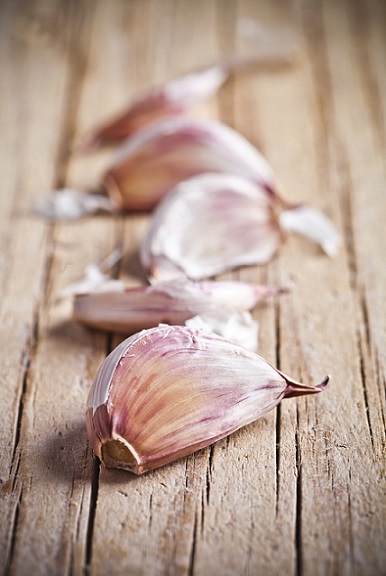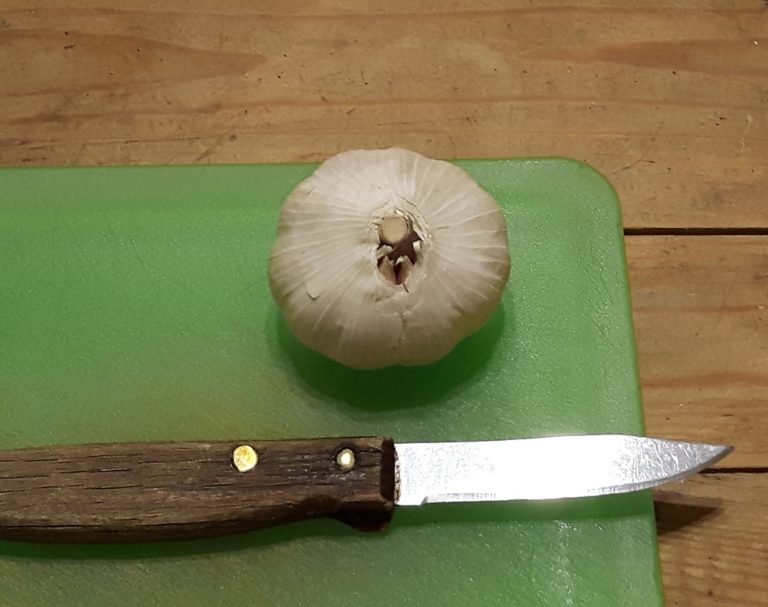 Using fruits, vegetables and spices as topical home remedies is one of the great unexplored frontiers in getting amazing skin.
Using fruits, vegetables and spices as topical home remedies is one of the great unexplored frontiers in getting amazing skin.
We’re not talking about myths like baking soda, we’re talking about pomegranate, ginger, blueberry extract, etc. Some remedies are proven yet obscure, like cinnamon, while some are completely unresearched. If applied correctly you could give your skin a huge advantage which leaves your whole neighbourhood scratching their heads.
If you know a guy with photoshopped-looking skin who spouts the same line about genetics every day, he’s probably in on the secret too. Diet is what truly cures acne, but home remedies can take your skin to the next level.
Frequently, the topical acne powers of plants correlate closely with their healthiness when eaten. Strawberries, for example, are rich in antioxidants and vitamin C, and in 2012, a study found that topical strawberries could boost your skin’s resistance to UV radiation by a surprising amount.
Cucumbers, meanwhile, are a staple in spas for antiageing and dark circles under the eyes. However, there’s isn’t even a hint that those powers are real, and that correlates perfectly with cucumber’s lack of nutrients and antioxidants.
That’s why if you’re a home remedy maniac, the next logical step is to choose every so called superfood and start testing them one by one. However, there are exceptions to the rule, and this brings us to garlic.
Garlic can strengthen your heart, increase antioxidant production, and even boost the strength of Russian soldiers. Yet the unfortunate truth is that garlic is powerful in every way: a promising way to improve your skin, and a proven way to ruin it.
Does garlic cut off the head of the acne snake?
What’s interesting is that compared to many acne remedies, most amateur internet dwellers are correct about garlic’s main power: its antibacterial properties.
Garlic contains a sulphurous compound called allicin, perhaps the most powerful of garlic’s compounds when eaten. Allicin is highly anti-microbial, able to inhibit numerous bacterial strains, as well as fungal growths, parasites and viruses.
Scientists don’t understand precisely how it works, but allicin apparently alters cysteine proteins in the bacteria’s structure, causing catastrophic deactivation of important metabolic enzymes needed for survival. Allicin also decreases glutathione (a vital antioxidant) in bacteria cells, converting it to a byproduct which the bacteria is incapable of reconverting, decreasing the bacteria’s defenses and making survival nearly impossible (study).
Read Annihilate Your Acne – get the greatest diet ever for clear and radiant skin
It’s also believed that alkaloids in garlic cause lysis, AKA the total obliteration of the bacteria’s cell membrane, like somebody clicking their fingers and making your skeleton disappear. One of the countless other sulphurous compounds in garlic like alliin, ajoene, diallylsulphide, dithin and S-allylcysteine has a huge chance of being involved too.
What does this mean? Rubbing garlic and its juice on your face could wipe out propionibacterium acnes, the main bacteria behind acne.
This Indian study analysed the question directly. Scientists created a garlic juice gel, in 7.5% concentration, with the other ingredient being the neutral carboxymethyl cellulose. Human subjects were tested, and p.acnes levels were substantially decreased. In one group, pimple counts were decreased at both 0 days and 49 days. Garlic juice was equivalent to clindamycin, a high strength antibiotic prescribed by doctors everywhere.
The results make sense, because allicin is active against both gram positive and gram negative bacteria; p.acnes falls into the former category. Topical garlic can therefore reduce the need for your immune system to bombard bacteria-infested skin pores, preventing acne from forming. There could easily be problems too, since much of skin bacteria is friendly, even including other strain of p.acnes, which create bacteriocins that suppress other microorganisms like yeasts.
Nevertheless, the evidence for garlic’s antibacterial properties is rock solid in 2018. Theoretically, garlic would be amazing for people with oily skin since sebum (oil) gives p.acnes a year long feeding frenzy. Garlic is also moderately rich in antioxidants, and its sulphurous compounds like ajeone are anti-inflammatory when eaten.
Despite this, garlic has one property which makes it a dead end as a home remedy.
Garlic virtually guarantees skin irritation
The problem is that if you apply garlic to your face, you are more than 50% likely to burn it. In fact, if you asked a French chef about using topical garlic, he would laugh in your face (probably while throwing a frying pan at you).
Garlic creates chemical burns varying from black, to a red and yellow colour which actually looks far more like a “pizza face” than acne. The stories are commonplace too. Reports of garlic burns show up in prestigious scientific journals and despairing user reports on acne.org alike.
Unlike honey, which is safe for almost everyone, garlic burns aren’t dependant on having an unlucky allergy. It’s a standard physical response of human skin rather than a random immune system onslaught. With garlic, rolling the dice and hoping for success is not an option. There are several varying factors, such as genetic disposition and preexisting skin conditions, but the average person will suffer some damage, which will easily be enough to outweigh the benefits.
What are the causes? Garlic is derailed by the same mechanism which makes it useful in the first place, disruption of cysteine proteins in cells, except that this time it’s in your cells and not the bacteria’s. Your skin’s epidermis is disrupted and coagulative necrosis (cell death) takes place.
Next: the 6 vitamins and minerals which can massively reduce acne
The main compounds behind this are said to be allicin, allylpropyldisulfide and diallyl disulfide. Just like extra virgin olive oil, garlic is a saviour when eaten but a nightmare when applied topically. Allicin is also able to cause anythocylsis, when skin cells called keratinocytes lose their communication and connections with each other.
In one study, a woman was given a second degree chemical burn. It only took one hour of garlic exposure for the burn to materialise later, eliminating the opportunity for leaving garlic on your face overnight. The burn healed after one week, but only after the woman applied pharmaceutical creams, creams which would interfere with your carefully crafted acne plan.
All this effectively makes garlic worthless as an antibacterial weapon, because the amount of exposure you would need to start killing p.acnes would easily be above the burn threshold. In fact, because the burns and antibacterial properties are caused by the same mechanism, you can’t expose yourself to one while minimising the other.
Does mixing garlic negate the dangers?
 In the acne-sphere, there’s three categories when it comes to garlic. Firstly, there’s people who understand its antibacterial properties and recommend numerous recipes.
In the acne-sphere, there’s three categories when it comes to garlic. Firstly, there’s people who understand its antibacterial properties and recommend numerous recipes.
Secondly, there’s the surprisingly high amount of people who are aware of the burning dangers. But finally, there’s the people who understand the burning dangers, but recommend that you combine garlic with honey or another anti-inflammatory topical treatment to counteract them.
Will this work? The answer is NO, because garlic’s dangers are far too specific. Disrupting cysteine proteins in epidermis cells and causing anythocylsis are completely different to a generic pro-inflammatory immune system response. It’s not like your body is sending too many neutrophils (immune agents) to your skin, which you could then counteract with the anti-neutrophil rose water.
The 7 greatest topical treatments for naturally clear skin
Therefore, using the likes of honey will never work to prevent garlic burning. Nor will tea tree oil or grapeseed oil. Out there in the world, there may be a topical treatment that can counteract the precise problems which lead to garlic burns, but it could remain undiscovered for centuries.
Even then, garlic is hardly a revolutionary topical treatment; it wouldn’t be worth the trouble given that raw honey, tea tree oil and tamanu oil all destroy p.acnes and provide bonus benefits.
Don’t risk it, or you too will be inducted into the garlic burn hall of fame.
History never lies
 To discover the final truth, you only have to open the history books. Garlic surfaces across many different eras and civilisations, but there’s a constant pattern. Here are some of garlic’s most interesting stories:
To discover the final truth, you only have to open the history books. Garlic surfaces across many different eras and civilisations, but there’s a constant pattern. Here are some of garlic’s most interesting stories:
ONE – garlic probably originated in China, and around 2700BC, garlic was considered to be a yang medical treatment as opposed to yin. It “heated” the body and was prescribed to people with depression.
TWO – in Ancient Egypt, crypts with paintings of garlic have been found dating back to 3200BC, and sculptures of garlic dating back to 3700BC. The Pharaohs fed their Pyramid-building slaves a steady supply of garlic to keep them hardy and strong. The Ebers papyrus, written in 1200BC, recommends eating garlic for 32 different illnesses.
THREE – archaeological excavations in the island of Crete revealed that the Ancient Greeks ate garlic as early as 1850–1400 BC. Specifically, soldiers were given garlic before major battles, and early Olympians used garlic as the performance enhancing drug of the day. Hippocrates recommended garlic for banishing intestinal parasites.
FOUR – by the age of the Roman empire, the likes of Pliny the Elder, Galen, and Columel all hailed garlic as one of the greatest of the popular folk remedies, including as an aphrodisiac.
What do these stories have in common? There’s little mention of topical application, or beauty like with honey’s historical stories; it’s all for strength and depression. In fact, one of the few historical tales that did involve topical application was three soldiers who tried to avoid a war by deliberately burning themselves!
A popular belief nowadays is that garlic can ward off mosquitoes, but even this relies on eating the garlic and having the smell secrete through your skin pores. For vampires, the government has failed to issue any instructions.
Conclusion: the historical evidence for topical garlic is just as negative unless you’ve gained planning permission to build a pyramid.
Garlic belongs in your body
With so many clear skin opportunities out there, there’s no point in wasting in any time with topical garlic. Instead, you should take advantage of garlic’s ability to cure the two most significant root causes of acne.
Firstly, always eat your garlic freshly sliced so that the allicin hasn’t degraded yet. Allicin has a short half life and vanishes into thin air within 24 hours.
Eat freshly cut garlic daily and firstly, your veins will be flooded with sulfenic acid. This substance is among the most powerful antioxidants scientists have yet discovered. It’s created as allicin digests in your stomach, explaining why allicin has health benefits yet never shows up in the bloodstream.
Vitamin D – the greatest nutrient for a bright and glowing skin tone
Another strong antioxidant is ajoene, proven by studies to hoover up free radicals better than James Dyson could ever dream of. There’s also evidence that ajoene can cure athletes foot, although trying it would be most unwise. Two of garlic’s antioxidants called S-allyl mercaptocysteine (SAMC) and S-allyl cysteine (SAC) have a huge absorption rate of 98%.
On the inflammation front, thiacremonone is another sulphurous compound, and this one can downregulate NF-KappaB and COX-2 activity. Both are master regulators of inflammatory chemicals, and COX-2 is specifically targeted by painkillers, potentially allowing garlic to replace some of your pharmaceutical drugs. There’s also 1,2-vinyldithiin, which can suppress a vast swathe of pro-inflammatory chemicals.
For basic micro-nutrients like vitamin C and magnesium, garlic is nowhere near as amazing as it looks; the statistics like 52% of the RDI for vitamin C are deceptive considering that you’ll never eat 100 grams in a single day.
However, garlic is also decently rich in an insoluble prebiotic fiber called inulin, which can fuel your good gut bacteria strains like bifidobacterium, assuming that they’re already diverse and healthy. Finally, garlic’s huge amount of sulphurous compounds make it one way to increase your production of the overlooked antioxidant glutathione, which relies on sulphur (and glycine and minerals) for its creation.
If you’re a lowly student eating pasta every night, then a single bulb of garlic daily could make a difference to your acne.
Conclusion
The great thing about unresearched home remedies is that they could do absolutely anything, even increasing collagen formation and your skin’s glow. But for garlic, the experimentation has been and gone, and the conclusion is clear: this plant will create more problems than it solves.
If it wasn’t for garlic’s endlessly documented burning abilities, I would recommend it as an experiment due to its sheer complexity, but all hope has now receeded. In 3000BC, an Ancient Egyptian slave probably vowed never to use topical garlic ever again as well, yet 5000 years later, people are still trying it.
Topical garlic joins lemon juice as a home remedy which is already fully researched and one which you should reject. Luckily, garlic is nowhere near as popular as lemon juice, featuring in far fewer internet recipes, but there’s still a few people mindlessly dishing out suggestions.
Have you received an invitation to a mysterious castle in Transylvania from a man simply called “Vlad”? Then eat your garlic instead and never apply it topically.
NEXT: the ultimate diet for clearing acne permanently
Thanks for reading!
